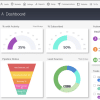Source: Deseret News —
It’s time to get serious about the U.S. housing supply crisis — a leading issue at the heart of the nation’s record high home prices, low rental vacancy rates and affordability problems.
That was a key takeaway from a webinar hosted Thursday by the Bipartisan Policy Center, focused on the state of the nation’s housing market.
Experts who participated in the discussion — Jeff Tucker, a senior economist for Zillow, and Caitlin Sugrue Walter, vice president of research for the National Multifamily Housing Council — explained how the pandemic housing frenzy dynamics are shifting, what today’s “housing recession” really means, why prices are largely expected to stay high, and why we’re in a far different situation than we were after the 2006 housing bubble popped.
To answer those questions, however, Tucker and Walter said we need to rewind to the Great Recession, when home building across the nation constricted dramatically amid the global financial crisis.
The U.S. is facing a structural deficit of homes — both for sale and for rent — stemming from a nosedive in construction activity following the market’s crash in the late 2000s. Since then, supply has slowly inched up, but not nearly enough to keep pace with demand, especially as more millennials age into the market.
Several studies now have concluded the nation is facing a structural deficit of “at least a few million homes, and it is that cumulative deficit built up from the home building industry really shutting down and staying shut down for several years in the Great Recession,” Tucker said.
The U.S. faces a housing supply deficit of 3.8 million units, Freddie Mac researchers estimated in May 2021. That’s an updated estimate from 2.5 million in 2018. Factor in all the young Americans who are now coming of age and want to start their own families — or perhaps no longer wish to live with their parents or roommates — and “we should have 4 or 5 or 6 million more households than we actually do,” Tucker said.
“So Americans are still kind of squeezed in and not able to kind of fulfill their American dream of having a place of their own. Whether it’s owned or rented, everyone’s kind of being squeezed into less space,” Tucker said. And “frankly, I think that actually … got worse” over the past two years, after the pandemic increased many Americans’ appetite — or need — to live in a place of their own.
But now, as affordability issues sharpen amid still high housing prices and mortgage rates floating between 5% and 6% — up from below 3% this time of year last year — “we are now starting to see a little bit of a return to the doubling up phenomenon,” Walter said.















